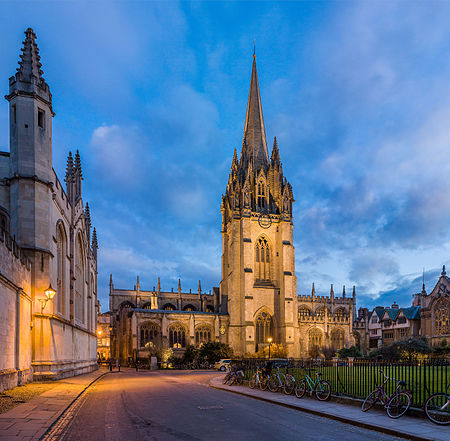University Church of St Mary the Virgin
Anglo-Catholic church buildings in OxfordshireBuildings and structures completed in 1270Buildings and structures of the University of OxfordChurch of England church buildings in OxfordGerman-speaking religious communities abroad ... and 4 more
Grade I listed buildings in OxfordGrade I listed churches in OxfordshireHistory of the University of OxfordIncomplete lists from October 2018

The University Church of St Mary the Virgin (St Mary's or SMV for short) is an English church in Oxford situated on the north side of the High Street. It is the centre from which the University of Oxford grew and its parish consists almost exclusively of university and college buildings.
Excerpt from the Wikipedia article University Church of St Mary the Virgin (License: CC BY-SA 3.0, Authors, Images).University Church of St Mary the Virgin
High Street, Oxford City Centre
Geographical coordinates (GPS) Address External links Nearby Places Show on map
Geographical coordinates (GPS)
| Latitude | Longitude |
|---|---|
| N 51.752777777778 ° | E -1.2537361111111 ° |
Address
St Mary the Virgin (The University Church)
High Street
OX1 4BW Oxford, City Centre
England, United Kingdom
Open on Google Maps








